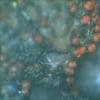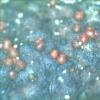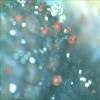
07-01-2026 17:29
 Marc Detollenaere
Marc Detollenaere
Dear Forum,On a barkless Populus I found some smal

10-11-2021 17:33
 Riet van Oosten
Riet van Oosten
Add-on topic http://www.ascofrance.com/forum/7059

07-01-2026 10:24
 Danny Newman
Danny Newman
Pezicula sp. on indet. hardwood Appalachian Highl

07-01-2026 10:05
 Danny Newman
Danny Newman
cf. Chaetospermum on XylariaCosby Campground, Grea

02-01-2026 17:43
MARICEL PATINOHi there, although I couldn't see the fruitbody, I

04-01-2026 17:45
 Stephen Martin Mifsud
Stephen Martin Mifsud
I was happy to find these orange asmocyetes which

03-01-2026 13:08
Niek SchrierHi all,We found groups of perithecia on a Lecanora

Bonjour chers collègues,
aujourd'hui j'ai ramassé un Nectria s.l. sur Hypoxylon fragiforme, que m'etonne par ces charactèrs que je ne connais pas (ce que ne veut dire beaucoup, car je connais des Nectrias assez mal ....)
Les spores sont assez petit, appr. 8-10 µm de longeur, verruculeuse.
C'est pas Nectria episphaeria, parce-que les perithecia ne sont pas papillé, mais avec une sommet applati.
Voici des impressions sur cets perizhecia.
peut quelqu'un me donner un piste pour cet espèce, ou me instruire que je doit examiner en plus?
merci beaucoup,
Andreas
I bet this fungus is Cosmospora arxii. The apex of the perithecia does puzzles me a bit, though. The perithecia of specimens that I have seen of C. arxii have had blunt apices. I think it must be a morphological variant of the same species. You can confirm the identity of the fungus by isolating it into pure culture. It should have a salmon-pink colony on potato-dextrose agar.
Best,
Cesar Herrera

Dear Cesar,
thank you very much for your tentative identification.
Unfortunately I have no possibility to make a pure culture of it. Is there something else to verify the identification? How certain is it that I can put the name arxii to it?
thank you again,
Andreas
Hi Andrea, hi Cesar.
Cesar, could you send me a complete description of C. arxii please.
This fungus is very current in our countries.
Alain

Andreas, if you want I can try a culture from your specimen. I am interested because there are two species occuring on H. fragiforme. One with a pink-salmon colony and another with a green colony.
Regards,
Christian





